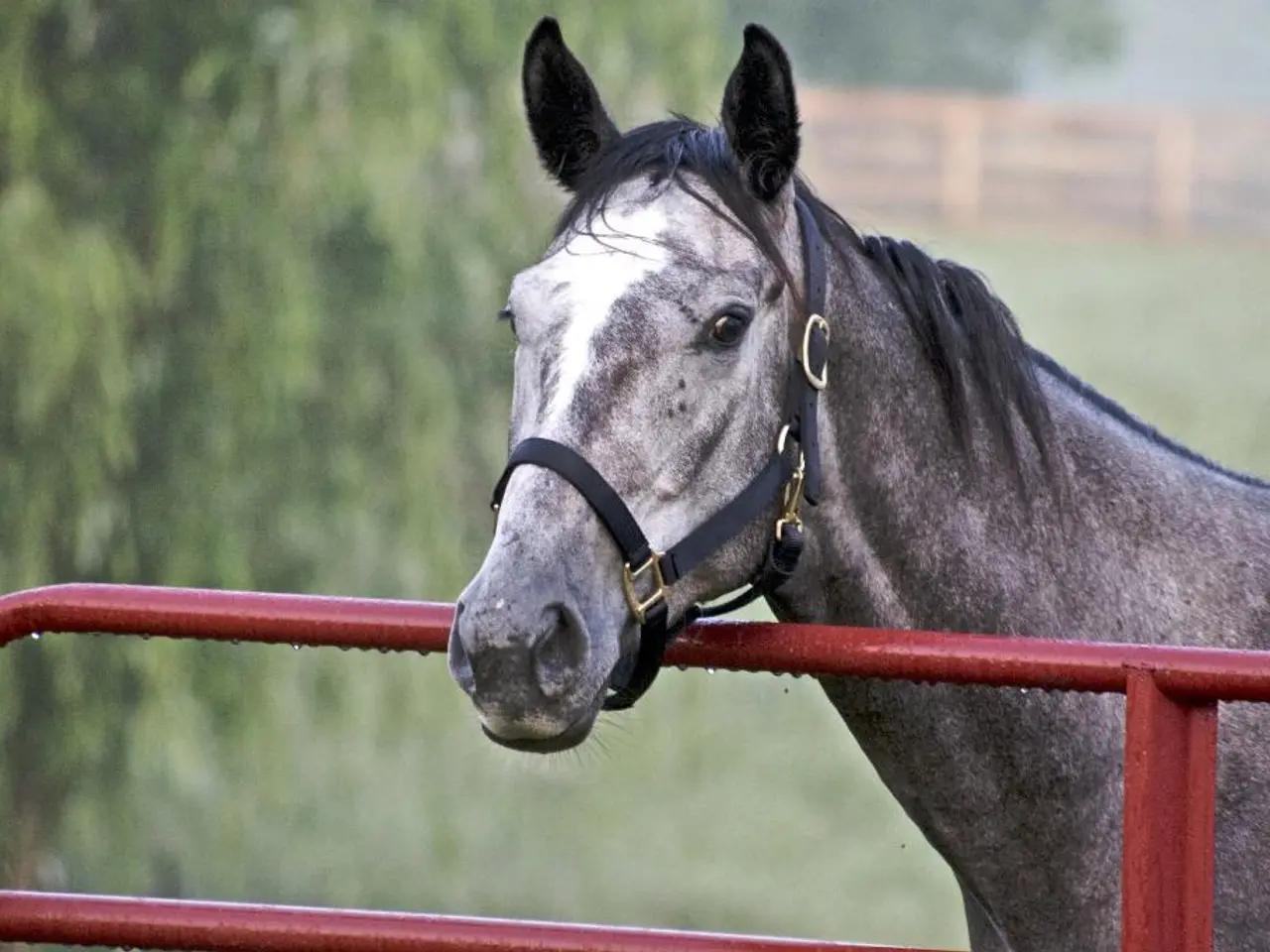Farm Health Measures: Regulating Vehicles and Cleanliness
In the world of livestock farming, maintaining good biosecurity is paramount to ensuring the health and well-being of animals and preventing the spread of diseases. Here are some key practices that farmers should follow.
Before leaving the farm, it's crucial to clean, wash, and disinfect all equipment and footwear that have come into contact with livestock or their bodily discharges. This simple step can help prevent the transmission of infections, especially when it comes to manure-hauling equipment, which should not be shared between farms without thorough cleaning and disinfection.
Herd-level biosecurity is managed by the herd owner or management team to exclude or limit the spread of disease within the herd. A sound health program and protocols, including parasite control and vaccination for likely diseases, should be developed in conjunction with a veterinarian.
Common sources of disease introduction in livestock farms include the movement and introduction of new animals, direct or close contact with neighboring animals, sharing of vehicles, machinery, equipment, feed, and bedding without proper cleaning and disinfection, movement of people, contamination from wildlife, vermin, wild birds, and insects, poor maintenance of animal housing, contaminated food, water, or bedding materials, vector-borne transmission, and the interface between wildlife, livestock, and humans.
Good biosecurity practices like isolating new animals, disinfecting equipment and vehicles, minimizing visitor access, controlling vectors, and maintaining clean housing help prevent disease introduction. Visitors from urban areas or with no livestock contact present very little risk of introducing disease to the farm.
Cleaning and disinfection of farm equipment such as front-end buckets and skid-steer loaders should be routine to prevent the spread of diseases like salmonella, leptospirosis, cryptosporidiosis, and Johne's disease. Disposable sleeves and gloves and other disposable, or disinfectable, clothing should be worn whenever there is direct contact with bodily discharges or animal tissues.
Biosecurity measures are implemented at national, state, and herd levels. Producers should purchase animals from sources with known health status and isolate new arrivals or returning animals for at least two weeks, preferably a month. Low-risk visitors should wear freshly laundered outerwear and clean footwear, and not enter pens, walk through feed alleys, or contact animals.
High-risk visitors to the farm include inseminators, processing crews, veterinarians, livestock haulers, and livestock-owning neighbors. In an emergency disease situation, such as the presence of Foot-and-Mouth Disease (FMD) in the United States, restrictions to access to the farm should be in place, and disinfection of vehicles should be considered.
States set requirements for arriving animals to prevent the entry or reintroduction of livestock diseases. Wild animals, such as rats and mice, can carry and spread diseases like rabies, leptospirosis, and salmonellosis. Keeping grain spills or other potential sources of food cleaned up and unavailable to wildlife can help reduce this risk.
Moderate-risk visitors, such as salesmen, feed and fuel delivery personnel, and mechanics, should observe the same precautions as low-risk visitors and also wear clean coveralls and boots, clean and disinfect any sampling equipment, and clean and disinfect dirty boots and remove coveralls before re-entering the vehicle.
Farm employees who have livestock at their own home should be required to report to work personally clean and in clean clothes that have not been exposed to their livestock. All visitors should arrive with clean clothing, boots, and equipment at every farm visit. Equipment and instruments that have direct animal contact should be cleaned and disinfected after use.
The United States is currently focused on preventing swine and avian influenza, as well as foot-and-mouth disease (FMD), from entering its animal population. Examples of diseases of particular concern to states include brucellosis, tuberculosis, and pseudorabies. Biosecurity in livestock production aims to keep disease agents out of populations, herds, or groups of animals.
Examples of diseases managed at the herd level include Streptococcus agalactiae mastitis, bovine viral diarrhea, bovine progressive pneumonia, and swine dysentery. Vehicles should be clean and free of visible manure on the tires and wheel wells to minimize the risk of disease entry. Livestock trucks and trailers should be clean, and preferably disinfected, before arrival on the farm.
In conclusion, implementing robust biosecurity measures is essential in maintaining a healthy livestock population. By following these guidelines, farmers can significantly reduce the risk of disease introduction and ensure the continued success of their operations.
- Science plays a crucial role in the development of effective pest management strategies for livestock farming, as it helps in understanding the diseases and medical conditions that affect livestock and devising methods to prevent their spread.
- Good soil management practices are essential in livestock farming, not only for the growth of feed crops but also for the prevention of soil-borne diseases that can affect livestock health.
- In addition to biosecurity measures, maintaining a healthy and balanced diet for livestock is important for their overall health and wellness, reducing the risk of diseases and promoting their productive potential.




